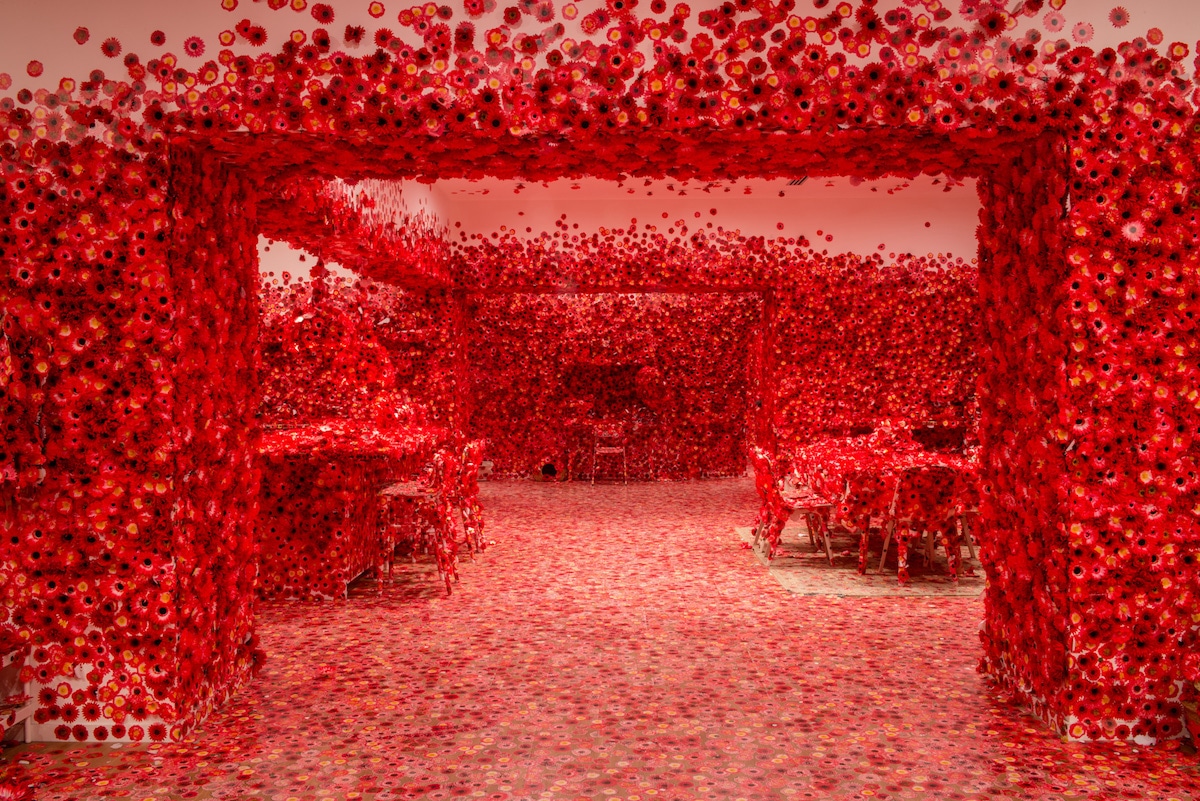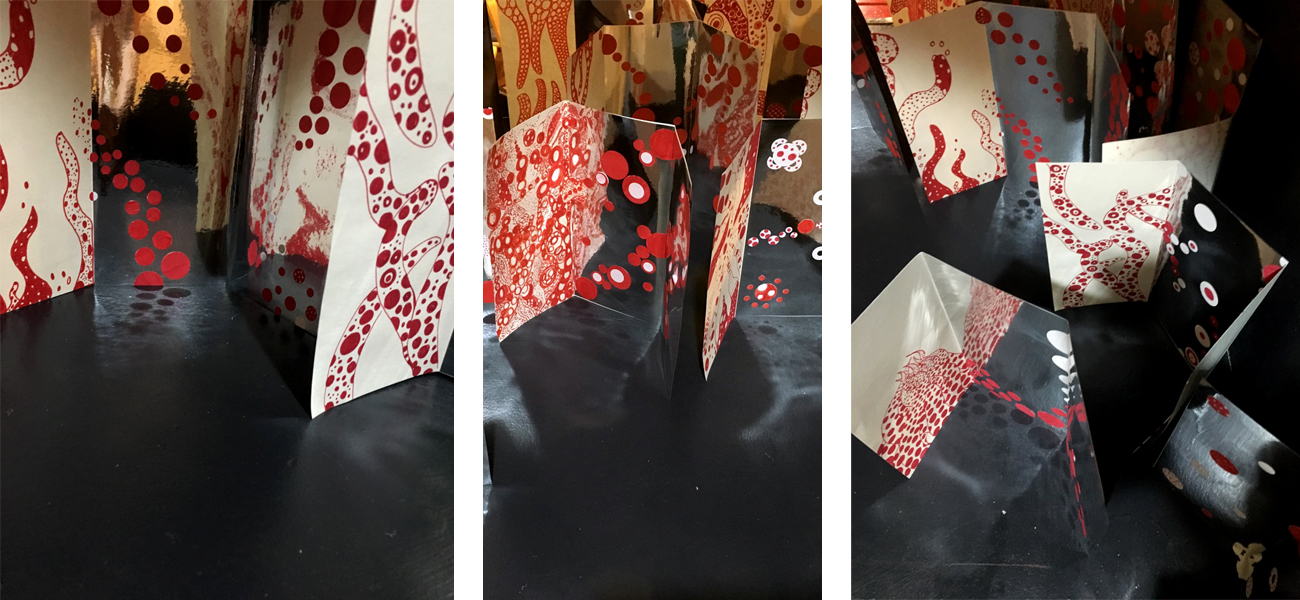
During the 1960s, Kusama took part in and organised happenings across the city. Much of her childhood was defined by the war and the artist notes that it was these events that made her value notions of personal and creative freedom so strongly.Īgainst her family’s advice, she trained at Kyoto City University of Arts, studying traditional Japanese painting, but moved to the United States in 1958, quickly becoming a key part of the avant-garde scene in New York. When the Second World War broke out, Kusama was still just a child, but like other school-aged children in her hometown, she was called to work, sewing parachutes for the Japanese army. In fact, her mother in particular wanted her to be a traditional Japanese housewife. However, this was not encouraged by her family. Kusama expressed an interest in art from a very young age. The artist grew up in rural Japan with her family making their living by cultivating and growing seeds. After over sixty years in the industry, Kusama remains as relevant as ever but who is she and what is it that makes her work so compelling?īorn in 1929, Yayoi Kusama is a Japanese contemporary artist who works across many disciplines including sculpture, installation, performance, painting and textiles. Kusama was recently named the world’s most popular artist, based on figures for global museum attendance and, in 2016, was selected as one of TIME Magazine’s World’s 100 Most Influential People.From her instagrammable Infinity Rooms to her UNIQLO sponsored Obliteration Room, Yayoi Kusama’s work appeals to everyone - art enthusiasts and young children alike. By the mid-1960s Kusama had become well known in the art world for her provocative happenings and exhibitions.įor almost 70 years Kusama has been engaged in a practice encompassing painting, collage, sculpture, performance, film, installation and environmental art, as well as literature, product design and fashion, including a collaboration with Louis Vuitton in 2012. The obliteration room, originally developed by Yayoi Kusama for the Queensland Art Gallery’s APT 2002: Asia Pacific Triennial of Contemporary Art, has toured to London, Buenos Aires, Rio de Janiero, Brasilia, Sao Paulo, Mexico City, Shanghai, South Korea, Switzerland and France, as well as the Dunedin Public Art Gallery in New Zealand.īorn 1929, Kusama studied painting in Kyoto before moving to New York in the late 1950s. The domestic environment with local characteristics creates an air of familiarity that makes participants, especially children, comfortable enough to engage with the work with little or no prompting. The obliteration room is a reflection of this hallucinogenic vision, as well as a way of embracing the whole world in a kind of overall pattern. The work relates to hallucinations Kusama began to experience in childhood, where her vision was clouded by spots.

Her mesmerising paintings, sculptures and installations have entranced people across the globe and it is our pleasure to deliver and share this playful, engaging and creative experience with Aucklanders and visitors to the city alike.’ ‘Kusama was recently named the world’s most popular artist.

Moving away from the traditional restrictions of a Gallery space, it encourages everyone to touch, engage and create in an entirely self-directed way,’ she says.ĭevenport says it is an honour to have such an internationally well-loved and revered artist as Kusama exhibit at Auckland Art Gallery. ‘The obliteration room makes artists of us all. The white walls, ceiling, furniture and objects in the space will be obliterated over time by the mass build-up of dots into a dizzying blur of colour as visitors apply brightly coloured stickers in various sizes to every surface.Īuckland Art Gallery Director Rhana Devenport says Kusama’s work welcomes people into a space to become collaborators on a celebrated artwork that has travelled the world. Kusama’s family-friendly participatory installation in the Gallery’s Creative Learning Centre begins as a New Zealand living room drained of colour which will function as a blank canvas ready to be invigorated. The Creative Thinking Project and Auckland Art Gallery Toi o Tamaki join forces to present the work of Yayoi Kusama - Obliteration Room.Ī rainbow of brightly coloured dots will obliterate a pure white room when avant-garde Japanese artist Yayoi Kusama’s The obliteration room opens on Saturday 9 December 2017 at Auckland Art Gallery Toi o Tāmaki.


 0 kommentar(er)
0 kommentar(er)
